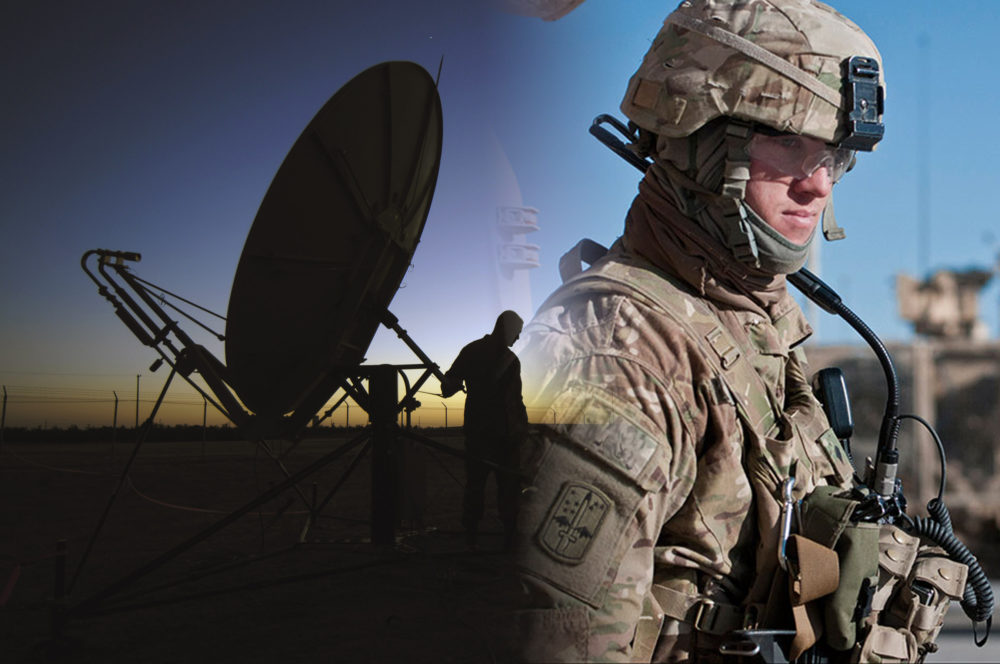The U.S. Department of Defense should continue to use a mix of military- and commercially owned satellites to serve its wideband communications needs, even as it requires increasingly higher levels of protection against jamming and other threats that have emerged in recent years.
That is one of the overarching conclusions of the DoD’s just-completed Analysis of Alternatives (AoA) for wideband satellite communications, whose findings and recommendations are expected to shape the U.S. military satellite communications (MILSATCOM) architecture in the years ahead. The long-awaited study, completed by government and industry teams over an 18-month period, was delivered to the secretary of defense near the end of June.
Although the details of the AoA have yet to be released, DoD officials offered a glimpse of its broad outlines June 27 and 28 at the MilSatCom USA conference organized by SMi Group of London.
“Hybrid rules,” said Operations Research Analyst with the Office of the Secretary of Defense, Norman Yarbrough, during a presentation on the AoA June 27. “We found in the analysis … that there are needs for purpose-built [satellites] and there are opportunities to expand our use of commercial [satellites].”
Since being ordered by Congress in the National Defense Authorization Act of 2016, the AoA has loomed large over the long running debate over the future of the wideband component of the U.S. MILSATCOM architecture. At issue has been the right mix of Air Force and commercial satellites to meet the DoD’s ever-expanding appetite for connectivity.
Currently a combination of Air Force Wideband Global Satcom (WGS) and commercial satellites serve as the backbone of the DoD’s satellite communications fleet. Brig. Gen. Tim Lawson, deputy commanding general for operations at the U.S. Army’s Space and Missile Systems Center, said some 70 percent of all MILSATCOM is carried via the wideband network.
Commercial satellite operators have long argued for a larger share of the wideband pie, and some expressed heartburn with the recent decision by Congress to fund two additional WGS satellites, increasing the size of the overall Air Force fleet from 10 to 12, ahead of the release of the AoA.
Yarbrough, whose presentation focused primarily on the AoA process, said the additional WGS satellites, the first of which is slated to launch in 2022, shifted the focus of the analysis slightly. But the funding decision, driven by congressional concerns about future gaps in the MILSATCOM architecture, did not change the overall picture or the opportunities ahead for DoD to leverage the commercial sector, he said.
A major factor in the AoA, as with other debates in the military space sector, is a new threat environment in which the space domain has become, in a refrain commonly repeated by DoD officials, increasingly congested, competitive and contested. Communications satellites in particular, face any number of threats ranging from jamming – both incidental and deliberate – and cyber attacks to direct kinetic attacks.
Deanna Ryals, chief of international MILSATCOM at Air Force Space and Missile Systems Center, which is responsible for procuring military space capabilities including the WGS satellites, said the set of MILSATCOM users that do not require some degree of jamming protection is much smaller today than just five or 10 years ago. “The major growth area that we see is the protected tactical community,” she said. “Many, many, many, many users out there have to have higher levels of protection.”
Meeting that need for increased security requires a mix of military and commercially owned satellites, Ryals said.
Communications via commercial satellites will become more secure with the advent of the Protected Tactical Waveform (PTW), developed by the Air Force and now undergoing field demonstrations, Ryals said. The PTW is compatible with WGS as well as commercial satellites.
Yarbrough raised the possibility that if satellite operators field the full range of protection capabilities required by the DoD now and in the future, the military could rely almost entirely on commercial systems for its wideband needs. “But we’re not sure that’s consistent with the commercial business case,” he cautioned.
Another significant takeaway from the AoA exercise, Yarbrough said, is the degree to which the existing base of user terminals affected the various options explored and how they fared. “It’s about the terminals,” he said, noting that there are some 17,000 terminals deployed by the military today.
Typically these terminals are configured to operate with one satellite system or another, and modifying or replacing them to take advantage of emerging capabilities in the space segment is a costly and time consuming exercise. Indeed, this limitation of the existing terminal base was a major theme at the conference.
Brian Teeple, acting DoD Chief Information Officer for Command, Control, Communications and Computers, said he would like to see industry come up with a terminal able to switch seamlessly between satellite systems and frequencies with minimal to no modifications. “One terminal that I could use across multiple satellite providers in a roaming-type manner,” he said.
This capability is analogous to modern cellphones, which automatically switch to whatever network is available at a given location, Teeples and others said.
“When the iPhone came out in 2007 it had five radios on it,” said Maj. Gen. Garrett Yee, Acting Deputy Chief Information Officer, G6, in the Army. “That was 11 years ago. We ought to be able to provide something to our warfighters that in a handheld device has more than a single option.”
“Industry is working toward a solution,” said Allan Ballenger, Corporate Vice President and Chief Commercial Officer of SES Space and Defense, a subsidiary of satellite operator SES that sells services to the DoD and other government customers. “SES Space and Defense is moving from being simply a bandwidth provider to a managed solutions provider, a model that requires a holistic approach that includes terminals.”
Stay tuned for more coverage on the SMI MilSatCom Conference in the coming weeks on The Government Satellite Report.
